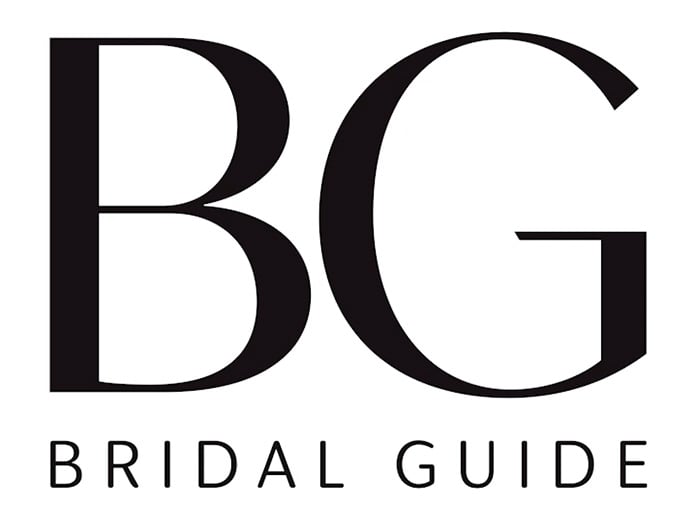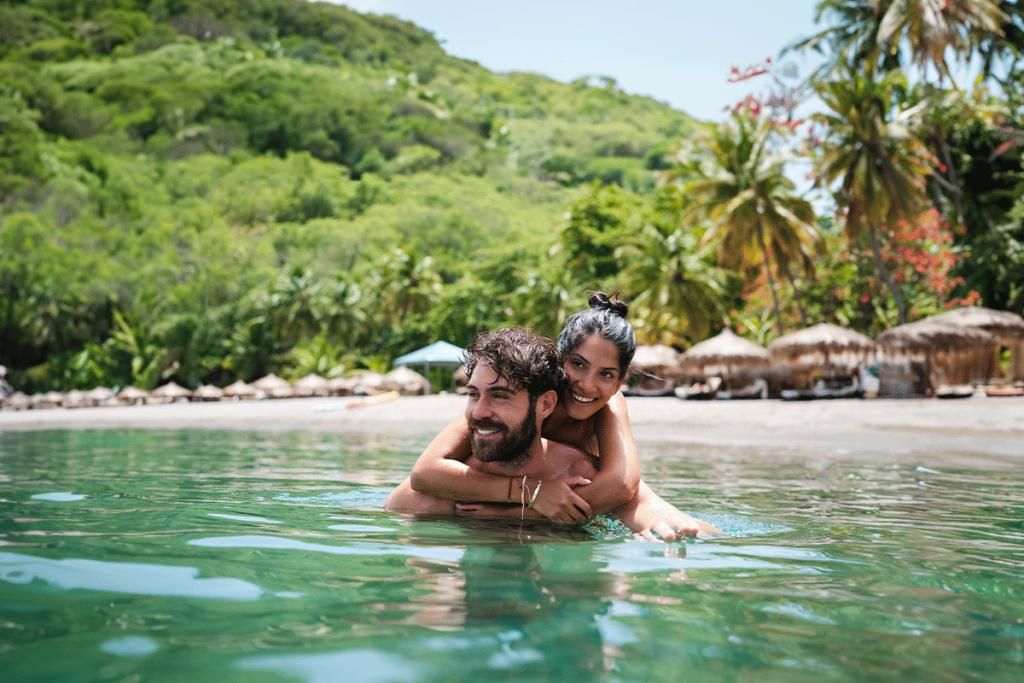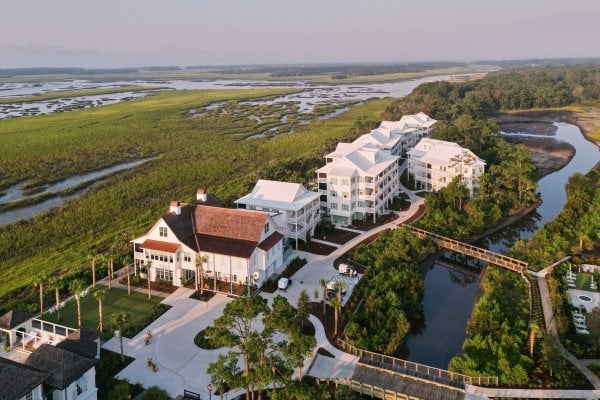Everything you need to know about the ceremonies, traditions and protocols involved in a military wedding.
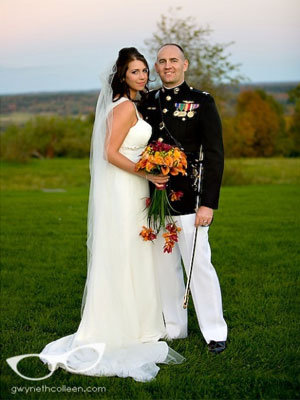 The regal beauty of a military wedding is an unforgettable experience. For those lucky enough to be invited to such an occasion — and certainly for the brides and grooms who have chosen to incorporate military traditions and clothing on their special day — these out-of-the-ordinary weddings are truly gorgeous, momentous and meaningful for all.
The regal beauty of a military wedding is an unforgettable experience. For those lucky enough to be invited to such an occasion — and certainly for the brides and grooms who have chosen to incorporate military traditions and clothing on their special day — these out-of-the-ordinary weddings are truly gorgeous, momentous and meaningful for all.
Military weddings are an honor reserved for any man or woman — whether enlisted, officer or cadet —who is serving or has served in any branch of the United States military. And each branch has its own traditions.
Whether you’re a guest (like I was recently), a participant, or the bride or groom, you’ll find that military weddings are in many ways identical to traditional weddings.
Deciding what degree of formality and tradition is up to the marrying couple. The couple can choose a civil service rather than being married in a military chapel. They can wear dress uniforms, or they can opt out while still having elements of a military wedding. For guests, as at any wedding, they simply need to greet military guests with respect and enjoy the party!
Military Dress and Service Uniforms
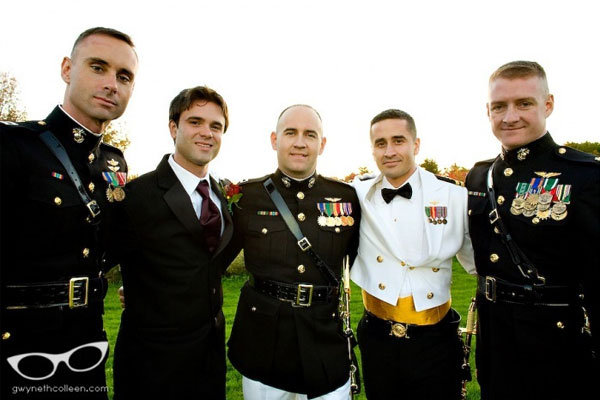
Dress military uniforms are often the only visible sign of a military wedding. While women in the military often forego wearing their uniform for a more traditional white dress, military men might opt to wear their uniform during the wedding ceremony then change to a traditional tux for the reception.
At the wedding I attended, the groom kept his dress uniform on all night. He was very respectful of what that uniform signified and drank moderately, danced with dignity, and did nothing to disgrace or dishonor the Marine Corps uniform he wore.
One guest asked why the groom didn’t have a boutonniere. The question was quickly answered by a Marine Sergeant guest, who said nothing can be added to the Marine uniform —meaning flowers, even in a boutonniere, are not allowed.
The bride or groom may select to wear a “Mess” dress uniform or a Class A (Service) dress uniform. Mess is worn for white-tie or black-tie weddings and usually entails a dark blue uniform and, depending upon the time of year and branch of service, white trousers. Class A uniforms are suited for semiformal events and equal a “suit-and-tie” level of formality. These uniforms are also a dark blue with optional white trousers.
Some couples include the colors of the specific branch of the military they are representing in everything from the flowers that are carried to the shades of the bridesmaids’ dresses to the favors placed by the guests’ plates. Non-military participants in the bridal party might wear sashes or cummerbunds in the military branch’s colors to lend a sense of cohesiveness and unity between the civilian and military participants.
In the wedding I attended, the bride chose to focus on the red of the Marine uniform and carried roses tied with marine blue and gold ribbons — just lovely!
Saber Arch
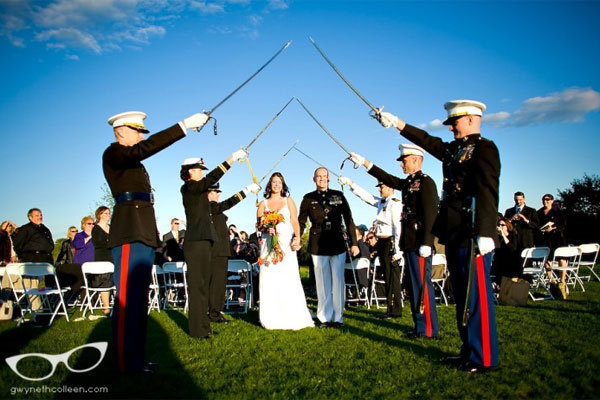
Many military weddings include a saber arch under which the bride and groom walk. Depending upon the specific military branch’s protocols, the arch is formed at different times during a wedding. The Navy has an indoor arch ceremony that takes place right after the benediction or blessing. Both indoor and outdoor arch ceremonies are options for Army and Air Force weddings.
The outdoor arch begins with the ushers going down the church steps, where they face off and raise their swords into an arch under which the new couple walk. Usually when the couple reaches the end of the arch, the final sabers are dropped to the ground and the couple must exchange a kiss. The sabers are then sheathed again and the celebration continues.
Seating for a Military Wedding Reception
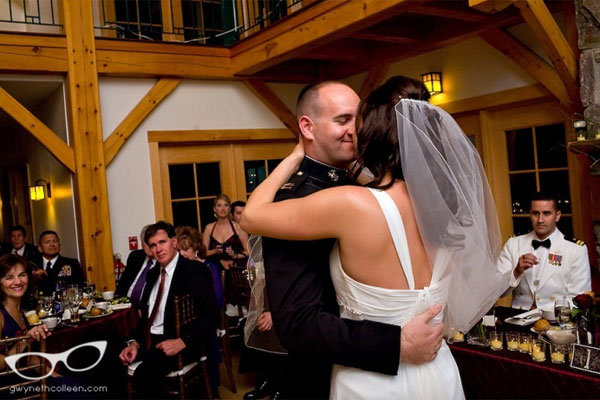
When the reception includes a seated dinner for both military and non-military friends and family, the seating arrangements must be carefully considered. Each branch of service has its own guidelines for proper seating.
Overall, special attention is paid to high-ranking military officers (generals and colonels in the Air Force, Army, and Marines; admirals and captains for the Navy). Any non-commissioned officers of equivalent rank should also be honored. Military guests can be seated together at a table of their own in a place of honor very near the head table and the immediate family or they can be seated among civilian guests.
At the wedding I attended, the military were asked their preference; all chose to sit with family members rather than together at one table.
Where to Get Military Wedding Details
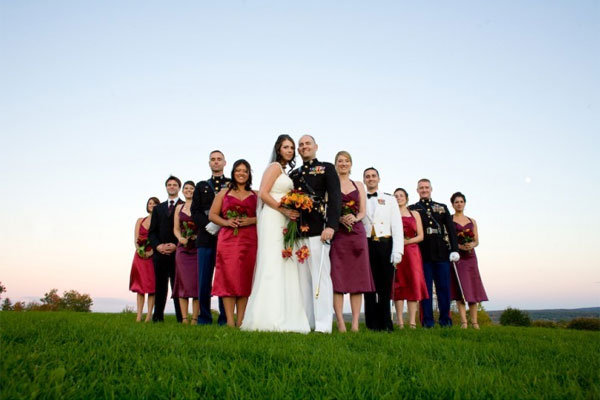
The local base protocol officer and chaplain can help make sure wedding choices are in line with current military requirements. For the bride who may not have time to research all of the dos and don’ts of a formal military wedding, consider hiring a professional planner. For the military wedding I attended, the wedding planner was able to solve all her problems, military or not. She also found a wonderful Marine cake topper, table linens to complement the Marine uniform’s colors, and ensured that the wedding was both fun and respectful.
A military wedding is steeped in tradition, history, and solemnity, whether the setting is a military chapel or the couple’s special spot. Although all weddings are beautiful, none surpass the glory, beauty and tradition of a military wedding.
Photo Credit: Gwyneth Colleen Photography
